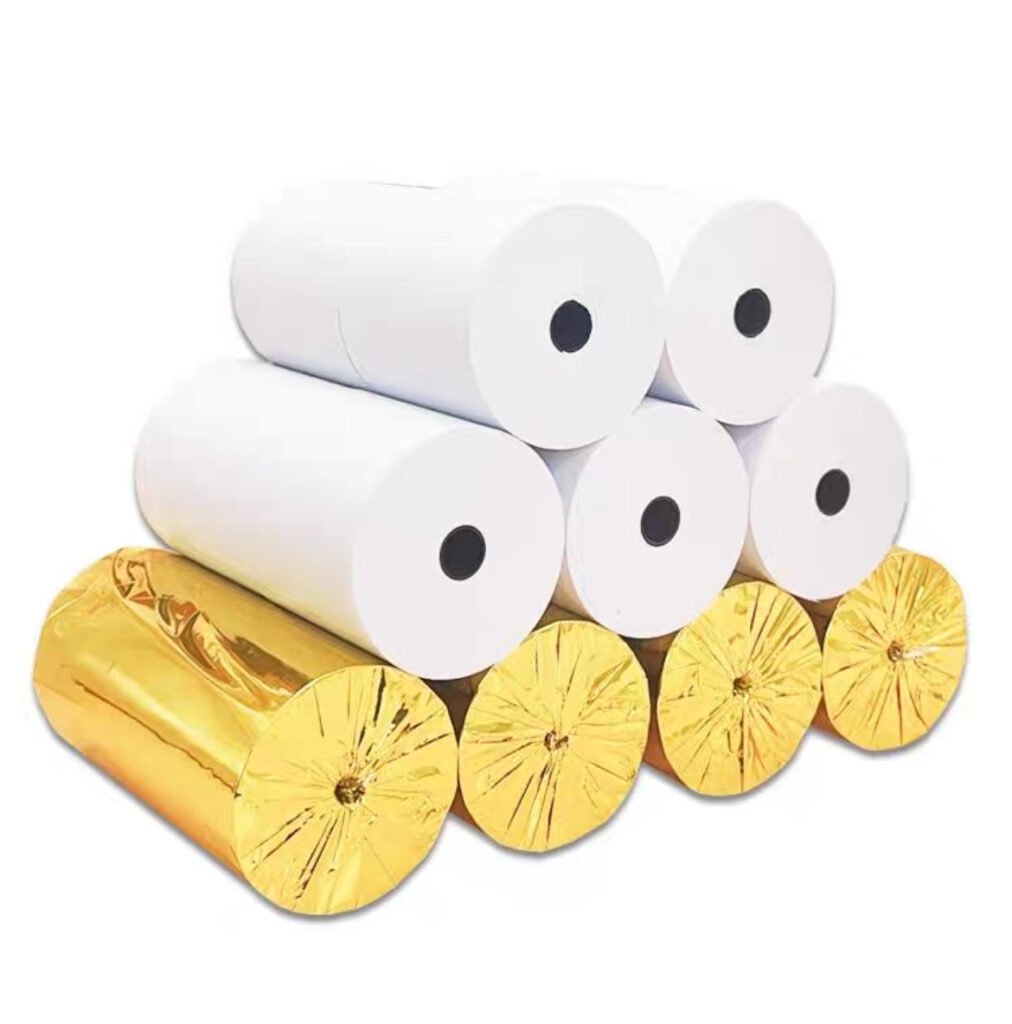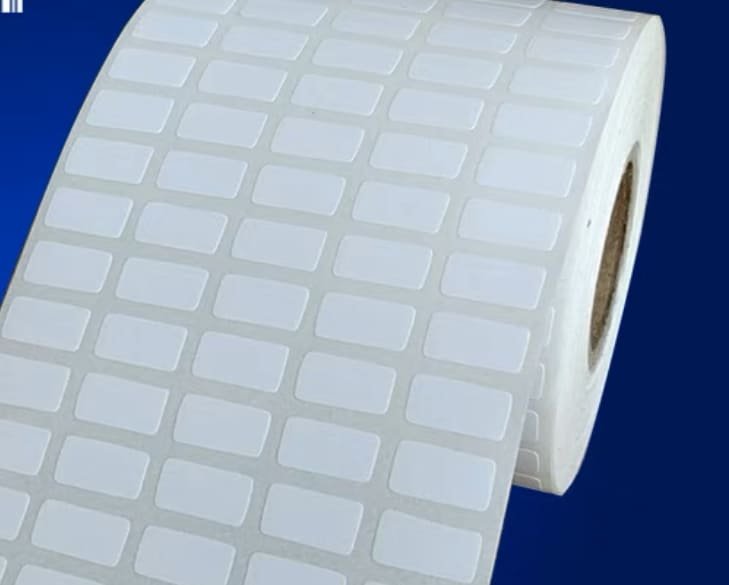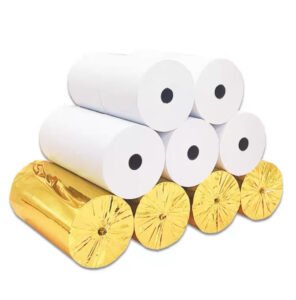Abstract
This article explores the distinctions between thermal labels and thermal paper, two pivotal materials in modern printing and labeling industries. Both materials employ heat-sensitive technology for image production, yet they serve distinct purposes across various sectors. We will delve into their composition, usage, benefits, and the specific industries that predominantly utilize these materials.
Introduction
In today’s fast-paced commercial environments, the efficiency of printing and labeling systems is crucial. Thermal labels and thermal paper are at the forefront of this sector, providing quick and reliable methods to produce high-quality prints for a wide array of applications. Despite their similar thermal printing technology, their uses and characteristics differ significantly.
Composition and Manufacturing
Thermal Labels: Thermal labels are adhesive materials designed for specific labeling purposes. They are generally made up of three layers: the top thermal layer, an adhesive layer, and a silicone-coated release liner. The thermal layer reacts to heat to form the printed image, which is crucial for creating barcodes, product labels, and shipping information.
Thermal Paper: Thermal paper, commonly used in receipt printing, is a lightweight paper coated with a material that changes color when exposed to heat. It typically consists of only the paper and the thermal coating, making it less durable than thermal labels but suitable for its intended temporary use.

Key Differences in Usage
Applications of Thermal Labels: Thermal labels are widely used in retail, warehousing, healthcare, and shipping industries. Their durability makes them ideal for applications that require long-lasting labels that can withstand exposure to elements such as water, oil, and varying temperatures.
Applications of Thermal Paper: Thermal paper finds its primary use in point-of-sale systems, ATMs, and grocery stores. It is best suited for temporary purposes like receipts or tickets, where permanence is not a requirement.
Benefits and Limitations
Thermal Labels:
- Pros: Durable, resistant to environmental factors, can be customized with pre-printed branding.
- Cons: More expensive than thermal paper, requires specific types of thermal printers.
Thermal Paper:
- Pros: Cost-effective for mass use, quick and quiet printing.
- Cons: Less durable, sensitive to light, heat, and friction, which can cause premature fading.
Industry Preferences
Retail and Healthcare: Retail sectors prefer thermal labels for their ability to produce high-quality, durable barcodes and product labels that enhance scanning accuracy and efficiency. Healthcare sectors utilize thermal labels for their resistance to chemicals and sterilization processes.
Banking and Hospitality: The banking sector favors thermal paper for ATM receipts due to its cost-effectiveness and ease of use. Similarly, the hospitality industry utilizes thermal paper in kitchens and service areas to produce order tickets rapidly.
Visual Representation
To provide a clearer understanding, here are comparative images showcasing the physical differences between thermal labels and thermal paper.

Conclusion
Although thermal labels and thermal paper utilize similar thermal printing technologies, their applications, durability, and cost vary greatly, tailored to meet the needs of different industries. Understanding these differences is crucial for businesses to choose the right material according to their specific requirements.
References
- “Thermal Printing Technology,” Journal of Printing Sciences, 2018.
- “Materials and Applications for Thermal Labels and Papers,” Industry Reports, 2021.
Note: The article contains approximations and generalized data for illustrative purposes.
This comprehensive article aims to equip businesses and consumers with a detailed understanding of thermal labels versus thermal paper, enhancing decision-making for their specific printing needs.




